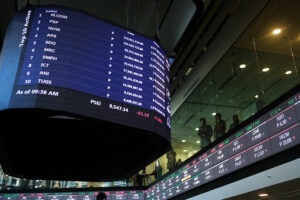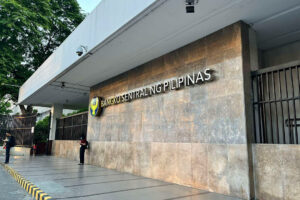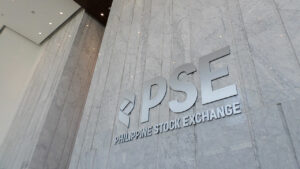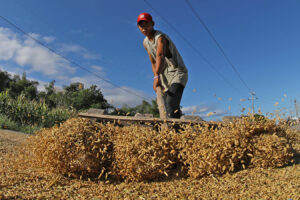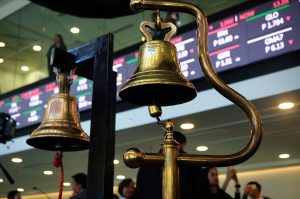Philippine closed lower for the third consecutive day on Tuesday as concerns over the economic impact of the Trump administration’s planned tariffs continued to dampen the market’s mood.
The benchmark Philippine Stock Exchange index (PSEi) fell by 0.52% or 32.17 points to end at 6,159.85, while the broader all shares index dropped by 0.92% or 34.13 points to 3,657.18.
“The local market declined for a third straight day as US President Donald J. Trump warned of more tariffs to come, this time on cars, pharmaceuticals, lumber, and semiconductors. The US president also warned of tariffs against those buying oil from Venezuela,” Philstocks Financial, Inc. Senior Research Analyst Japhet Louis O. Tantiangco said in a Viber message. “The mounting tariff threats are weighing on the global economy’s outlook.”
“Philippine shares fell once again as uncertainty over Trump’s tariff plans weighed on sentiment,” Regina Capital Development Corp. Head of Sales Luis A. Limlingan likewise said in a Viber message.
Mr. Trump said on Monday automobile tariffs are coming soon even as he indicated that not all of his threatened levies would be imposed on April 2 and some countries may get breaks, a move Wall Street took as a sign of flexibility on a matter that has roiled markets for weeks, Reuters reported.
At the same time, Mr. Trump opened another front in a global trade war by slapping 25% secondary tariffs on any country that buys oil or gas from Venezuela, a directive that sent oil prices climbing.
US stocks ended Monday broadly higher on optimism that the tariffs set to be detailed next week may not be as extensive as expected. The S&P 500 index gained nearly 1.8% to close at its highest in more than two weeks.
Asian stock bourses initially joined in on Tuesday morning but by mid-afternoon the relief rally looked set to fizzle out. MSCI’s broadest index of Asia-Pacific shares outside Japan was 0.35% lower ahead of the European open.
At home, majority of sectoral indices closed lower on Tuesday. Mining and oil declined by 3.02% or 285.32 points to 9,161.31; holding firms sank by 1.42% or 72.99 points to 5,055.88; industrials dropped by 0.74% or 65.18 points to 8,727.29; and financials went down by 0.55% or 13.42 points to 2,388.83.
Meanwhile, property rose by 0.45% or 9.95 points to 2,209.66 and services increased by 0.02% or 0.43 points to 1,997.98.
“Universal Robina Corp. was the top index gainer, climbing 1.93% to PHP 76.45. Semirara Mining and Power Corp. was the main index laggard, falling 4.59% to PHP 35.30,” Mr. Tantiangco said.
Value turnover went up to PHP 4.75 billion on Tuesday with 520.59 million shares exchanged from the PHP 4.63 billion with 630.53 million issues traded on Monday.
Decliners outnumbered advancers, 107 versus 84, while 56 issues were unchanged.
Net foreign selling climbed to P604.51 million on Tuesday from PHP 240.83 million on Monday. — Revin Mikhael D. Ochave with Reuters







 DOWNLOAD
DOWNLOAD




